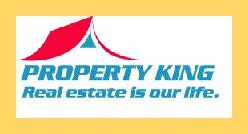Look for a Healthy National Market
While experienced and astute real estate investors may be able to make some money in a weak national real estate environment, the odds are against them, and the odds of success for newer investors in such a market are even worse. Rising interest rates can throw a lot of cold water on an otherwise hot real estate market because those who have purchased real estate with adjustable rate mortgages have to pay more to keep it and those who don't have real estate often can't afford it. This leads to reduced demand for real estate, and prices fall accordingly.
Thus, when starting to build your real estate portfolio, the ideal time is in a declining interest rate environment. Generally speaking, not only will your loan be less expensive, but demand is likely to be higher, barring a momentary credit crunch, which can be withstood by good capital management.
Another desirable trait is a healthy gross domestic product (GDP), since this figure really speaks to the overall health of the economic system that supports the real estate market. In healthy GDP times, such as growth above 3% annually, it is rare to see significant real estate weaknesses.
Lastly, unemployment-rate data is often the best leading indicator of market softness. If people see few prospects for income around where they live, they move. In turn, this greatly reduces home price appreciation (HPA).
Choose a Specific Location
If you find flat to falling interest rates, decent GDP growth and respectable unemployment rates in the national market, you can start looking for a desirable local market. Seek out an area with relatively strong appreciation potential relative to other markets. Well-publicized data like the Case-Shiller Home Price Index and Bureau of Labor Statistics unemployment rates are excellent indicators into the future health of the top real estate markets.
Local unemployment data is often a leading indicator to the housing data. The smart investor looks to invest in a city that is exhibiting healthy unemployment trends and relatively strong HPA data. Hopefully, this is a city where you live and therefore have a strong grasp of the vagaries of the local marketplace and can easily manage the property. However, with sound management controls, it can be possible to invest successfully in other locations where quality management partners are available.
Find the Urban Sprawl Inflection Point
Once you have found the ideal city for your desired investment, look for the urban sprawl hotspot. If you see the city expanding and can tolerate some risk, invest in real estate in the outer perimeter. However, if the market looks ominous or vague, stick to the inner rings so that you have a buffer against reverse urban sprawl. Warning signs to stay away from the perimeter include: material unemployment changes and/or slowing economic growth in the local area. Or simply look at the underlying business health of the major employers in the area. If it is weak, layoffs are likely coming, which could start to suppress real estate values due to marginal labor supply attrition. If the business health of the area's major employers is strong, the opposite is true.
Real estate values can vary widely within a metropolitan area. For example, if the average HPA in a city is 5%, it may be 2% downtown, 6% in the first suburban ring and 10% in the second suburban ring. The third ring would likely be farmland with modest HPA potential. Note the phenomenon here. Your most volatile real estate appreciation will happen in the outer ring adjacent to the farmland because this is the outer cusp of the city. This location leverage is exploitable by owning the edge in growth markets. Logically, in a down market, you would want to be in the core. This is where the least depreciation is likely to occur since full housing markets make this the least likely place for supply and demand balance disruption.
Understanding investing risk in different areas of the city is very similar to understanding how financial instruments generally behave. Think of the urban area of a city as investment-grade bonds, the first suburban ring as equities, and the outer ring as derivatives. Understanding where the urban sprawl inflection is occurring in a city can bolster returns on the upside, or protect investment on the downside.
For fun, let us peel the onion one more layer to find the hottest areas. Suppose that you decide to invest in the perimeter since you see economic growth and growing labor demand in the area. You could try to anticipate stoplight location. That is where future commercial properties like suburban strip malls will be built, and as residential real estate development fills in around these future strip malls, property values will likely jump significantly relative to average real estate returns.
Conclusion
The opportunity for above-average rates of return seems greater in the real estate realm than the financial instrument realm since because are fewer eyes looking at nonhomogenous units. In addition, knowing the local market produces investment advantage. A long-term or buy-and-hold strategy is better if you have ample capital and limited opportunities, while a short-term or flipping strategy would make more sense if you have tremendous insight into the sweet spots and limited capital. Regardless of your time frame, you should first look for a strong national market, then a region where publicized data shows decent HPA opportunity, and finally, play the urban sprawl perimeter if you believe the area is growing, or stay away from it if you think it is shrinking. Understanding these key points can help maximize value of any real estate portfolio.












0 comments:
Post a Comment